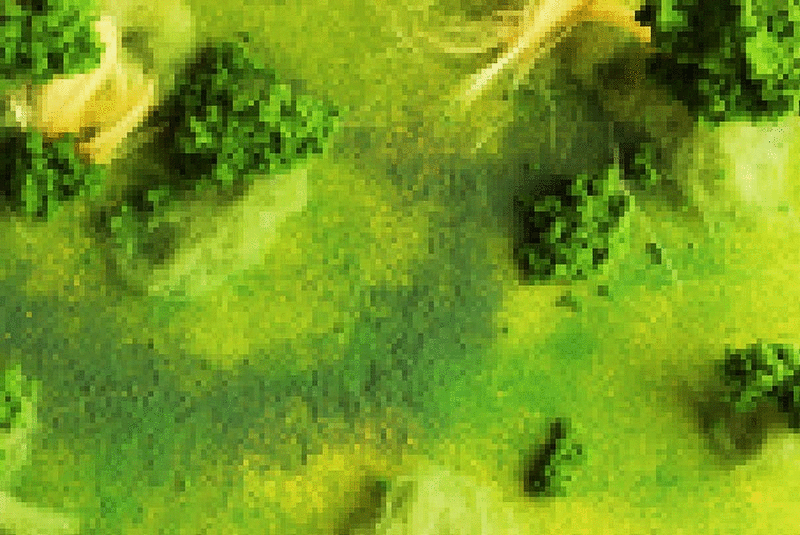iEarth

Joanna Zylinska, iEarth, 4 landscapes made with children’s diorama kit, digitally photographed, processed and turned into a gif animation, 2013
iEarth offers a vision of natural spaces that are at the same time (wo)man-made while also bearing an imprint of a technological tool. Manufactured from a children’s diorama kit, these ‘unnatural landscapes’ dazzle with colour and lushness, displaying the kind of greenery that is more associated with media representations of nature than with ‘nature itself.’ The bird’s eye view of these landscapes evokes the perspective of the satellite images of different locations, both remote and familiar, which we associate with Google Earth or Microsoft’s Virtual Earth. This particular perspective has a double function: it both denaturalises the familiar and creates an illusion of immediacy, proximity and visual mastery.
Technology is mobilised here on a number of levels – in the crafting of the diorama, in the taking of the image, in the pixellation of the photographs themselves, and then, in the last instance, in the gif animation. Pixellation and animation are not just visual or conceptual gimmicks. Their use is an attempt to destabilise the relationship between ‘nature’ and ‘artefact’, between ‘the real’ and ‘the virtual.’ It is also a reminder of the fact that a photographic representation, be it analogue or digital, is always already technological, and that what we think of as ‘landscape’ or ‘nature’ comes to us via the physical and technological effort of capturing, carving, moulding and freezing, by means of a whole sequence of technological tools such as ploughs, tractors, excavators, secateurs, easels, paintbrushes and cameras.
This serious philosophical agenda is underpinned by a more playful desire to poke fun at the monumentalisation of nature in the work of meditative ‘large-format’ landscape photographers, such as Andreas Gursky, Edward Burtynsky or Dan Holdsworth. The ‘now you see it, now you don’t’ aspect introduced by pixellation and gif animation, coupled with what may look like excessive acceleration or even computer error, pushes the viewer to engage with these images physically, through squinted eyes. The aesthetics of iEarth thus convey a message: the viewer has to become actively involved in the process of seeing by moving her head, blinking or even looking away from the dizziness of this pseudo-sublime, one we associate with the sometimes frustrating graphic culture of the early Internet. The homonymy between the ‘I’ and the ‘eye’ in iEarth is not only a commentary on our practices of looking at the world but also on our narcissism when engaging with it. The brand-like title is to remind us that this ‘nature’ has become a commodity, a product we fetishise and yearn for. Just like Vertov’s kino-eye, iEarth is intended to foreground the technical process of the production of the world through biological and photographic vision. It is also to help us look at nature, and at ourselves viewing nature, with a different eye.
This project has been published in issue 5 of Ada: A Journal of Gender, New Media, and Technology, edited by Aristea Fotoupolou, Kate O’Riordan, and Alexandra Juhasz, on the topic of 'Queer Feminist Media Praxis'.
Citation: Zylinska, J. (2014) iEarth. Ada: A Journal of Gender, New Media, and Technology, No.5. doi:10.7264/N36W98CF

